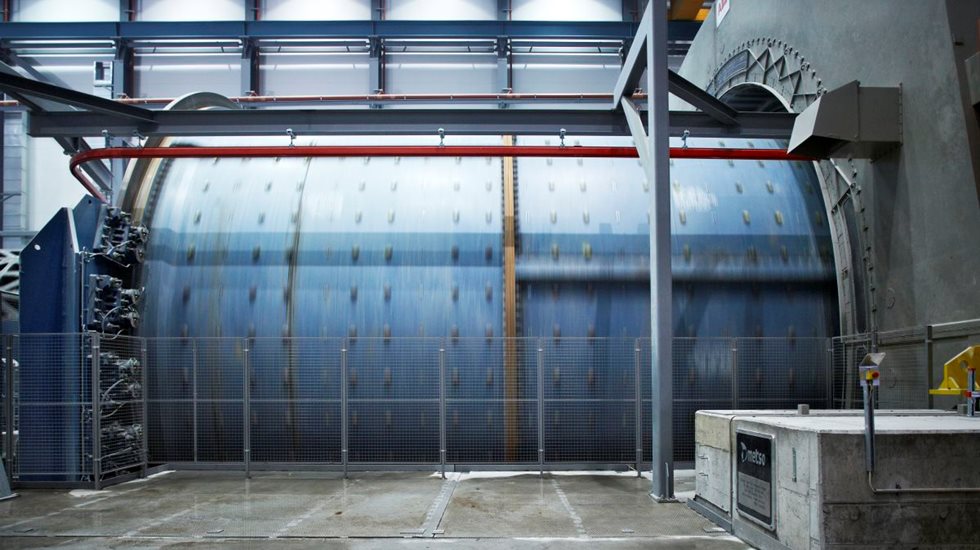How are frozen loads formed?
Horizontal mills are typically used to break and grind rocks that contain minerals. To aid in the grinding process, water and steel balls are added to the process, thus forming the charge inside the mill. Ball mill load contains a significant amount of steel balls and can become extremely heavy. For example, a large load of 7.3 m in diameter present in the ball mill weighs about 907 tons. Although Semi Autogenous Grinding (SAG) and Autogenous Grinding (AG) mill loads contain fewer balls and no steel balls, respectively, the large volumes in the mill can also end up being quite heavy. In all three cases (ball mill, SAG or AG), when the equipment is stopped, the material inside can dry out over time and form a solidified charge. When the mill is restarted, the solidified charge needs to be broken up and stirred or problems can occur with the formation of a frozen charge.
Damage to the mill integrity
Mill bodies are normally made of carbon steel. Typically, the elastic limit of the mill shell material is at least 6 times the operating stress of the mill. In fact, when a frozen load breaks the flanges, we know that the impact loads have exceeded the stress limits of the material. Therefore, a frozen load that has caused damage to the body or flanges suggests that impact loads are more than 6 times stronger than operating loads.
Why are mills designed by original equipment manufacturers (OEMs) not built to withstand a frozen load?
Most mills are not designed to withstand a frozen load. Based on the estimated impact loads, the mill components would need to be at least four times thicker than the original to withstand a typical frozen load. This would make the cost of mill components unsustainable and the equipment inefficient in terms of energy consumption. As will be discussed below, it is possible to eliminate frozen loads without having to redesign the mills, considering two possible preventive solutions.
Two solutions to consider to avoid frozen cargo
Proper departure procedure
Having and following a proper starting procedure is essential to avoid a frozen load. After a prolonged shutdown, it is not advisable to start the mill without prior care. If the mill is equipped with an auxiliary drive, turning the mill slowly will ensure that the frozen charge breaks. If an auxiliary drive is not available (typically in the case of older or smaller mills), intermittent starts and stops can be used until the load begins to be stirred.
Metso frozen charge detector
A second way to prevent a frozen charge is to install Metso's patented Freeze Charge Detector, which basically measures mill acceleration and will stop starting if frozen charge conditions exist.
The Frozen Load Detector is used to disengage the mill clutch if a frozen load condition is detected during start-up. The system uses an encoder mounted on the pinion shaft to measure speed as the mill rotates between 40 and 70 degrees. By measuring the rate of change of speed (acceleration), the device will detect whether the load has cascaded into this zone. If there is no cascading load in this zone, the detector will send a signal to disengage the clutch to prevent the mill from turning. The mill must stop rotating when a frozen load is detected to prevent the load from being lifted and dropped.
The Frozen Charge Detector is mainly controlled by the main control room. A local PanelView panel is located next to the mill. In the control room, the operator can view the status of the LCD (Locked Charge Detector) system, enable/disable the LCD system, and reset a fault condition.
Preventive maintenance is essential
The effects of the frozen charge can damage your mill and, in cases of severe damage, stop your production. Investing the time to implement one of the above solutions may mean a little extra effort and planning ahead, but this should be considered as an integral part of the overall plant preventive maintenance strategy to minimize unplanned mill downtime.

